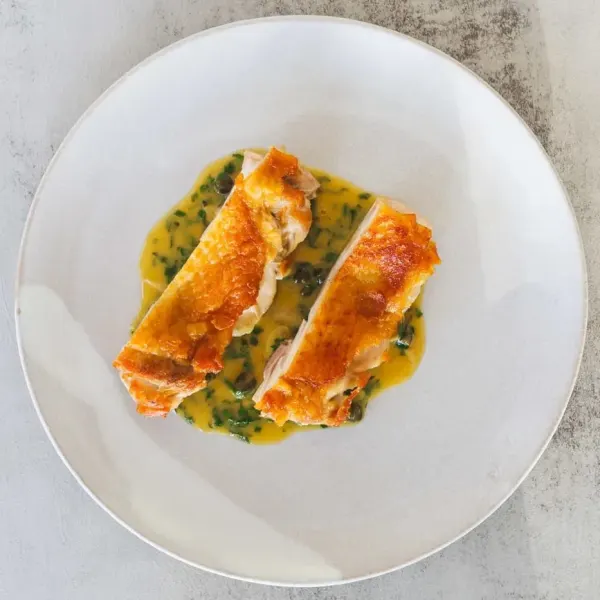
 35 minutes
35 minutesThese are great techniques to get under your culinary tool belt. Both rendering the chicken skin and the technique of making the pan sauce are versatile recipes which can be modified to make a wide variety of finished dishes.


tablespoons
Garlic, Sliced
cloves
Capers, Drained
tablespoons
cups
tablespoons
Flat Leaf Parsley, Chopped
tablespoons
each
1. Debone Chicken
Start by deboning the chicken thighs. With the skin side down, slice along each side of the bone, then use your knife to cut the underside of the bone away from the flesh. Remove the bone completely and season the chicken with salt on both sides. Save the bones in the freezer until you have enough to make a batch of stock.
2. Cook Chicken
Heat a heavy-bottom pan (cast iron, carbon steel, or stainless steel) over medium-low heat. Add the avocado oil and place the chicken thighs in the pan, skin side down. Check the skin after five minutes and apply pressure, either with a spatula or with a small plate, on any spots not browning evenly. Cook for about 15-20 minutes total, until the skin is golden and crispy. Flip the chicken and cook for another 2-3 minutes, until the meat is fully cooked. Remove the chicken from the pan and let it rest skin-side up. The goal is to cook the chicken primarily on the skin side so you can render the fat and make it crispy. Resting with the skin-side up will ensure the juices don't flow into the skin, making it soggy.
3. Sweat Aromatics
In the same pan with the chicken drippings, add the sliced garlic and capers. If there's too much fat in the pan from the chicken, drain some off leaving just enough to sweat the aromatics. Cook over low-medium heat until the garlic is softened and fragrant.
4. Deglaze and Reduce
Pour in the white wine, scraping the bottom of the pan to lift the fond. Let the wine reduce by about 80%.
5. Finishing Ingredients
Once the wine has reduced, add in the butter bit by bit, stirring constantly to create an emulsion. If the sauce is too cold, increase the heat slightly. If it's too hot and the sauce appears too thin, reduce the heat. This is a critical point of making butter sauces. If the sauce is too thin, there could either be too much water left from the wine, or it could be too hot. Once emulsified, stir in the chopped parsley.
6. Serve
If needed, flash the chicken in a hot oven or the hot sauce to reheat slightly. Spoon the garlic-caper pan onto the bottom of a plate, topping it with the sliced, rested chicken thighs and serve.
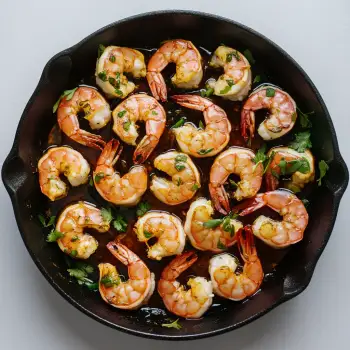
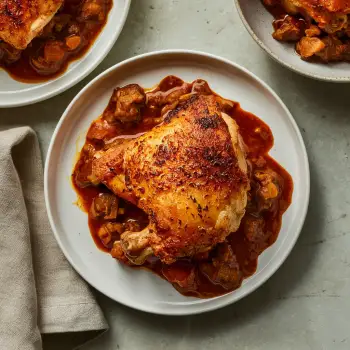
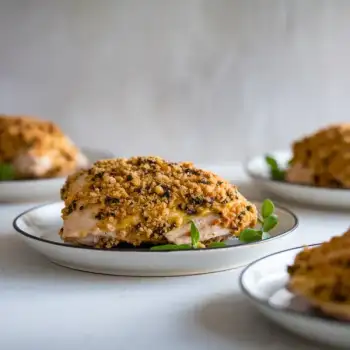
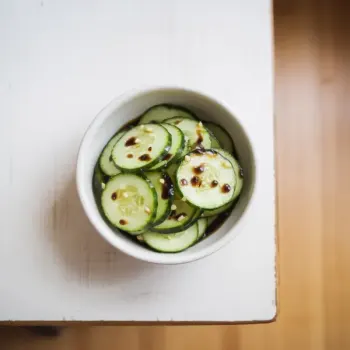
Comments (0)